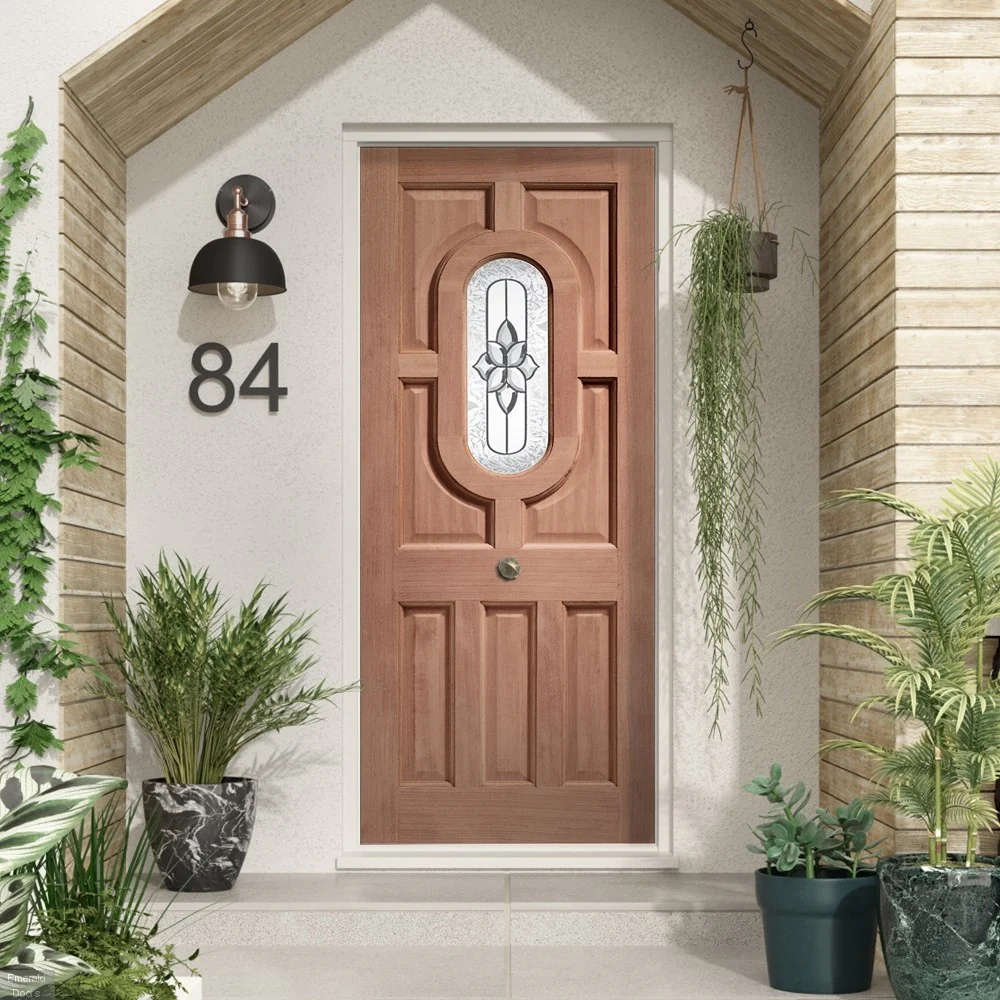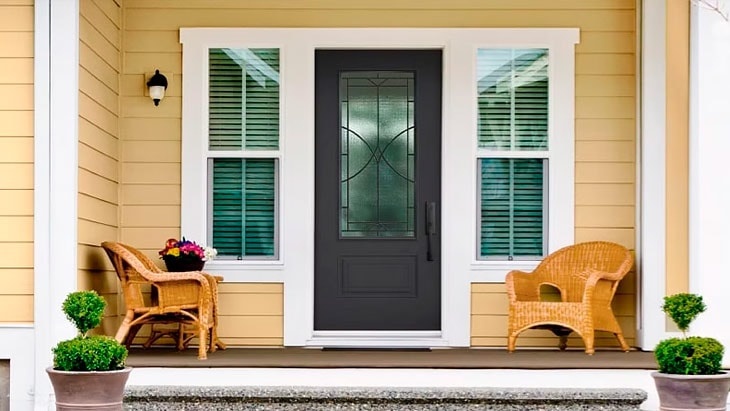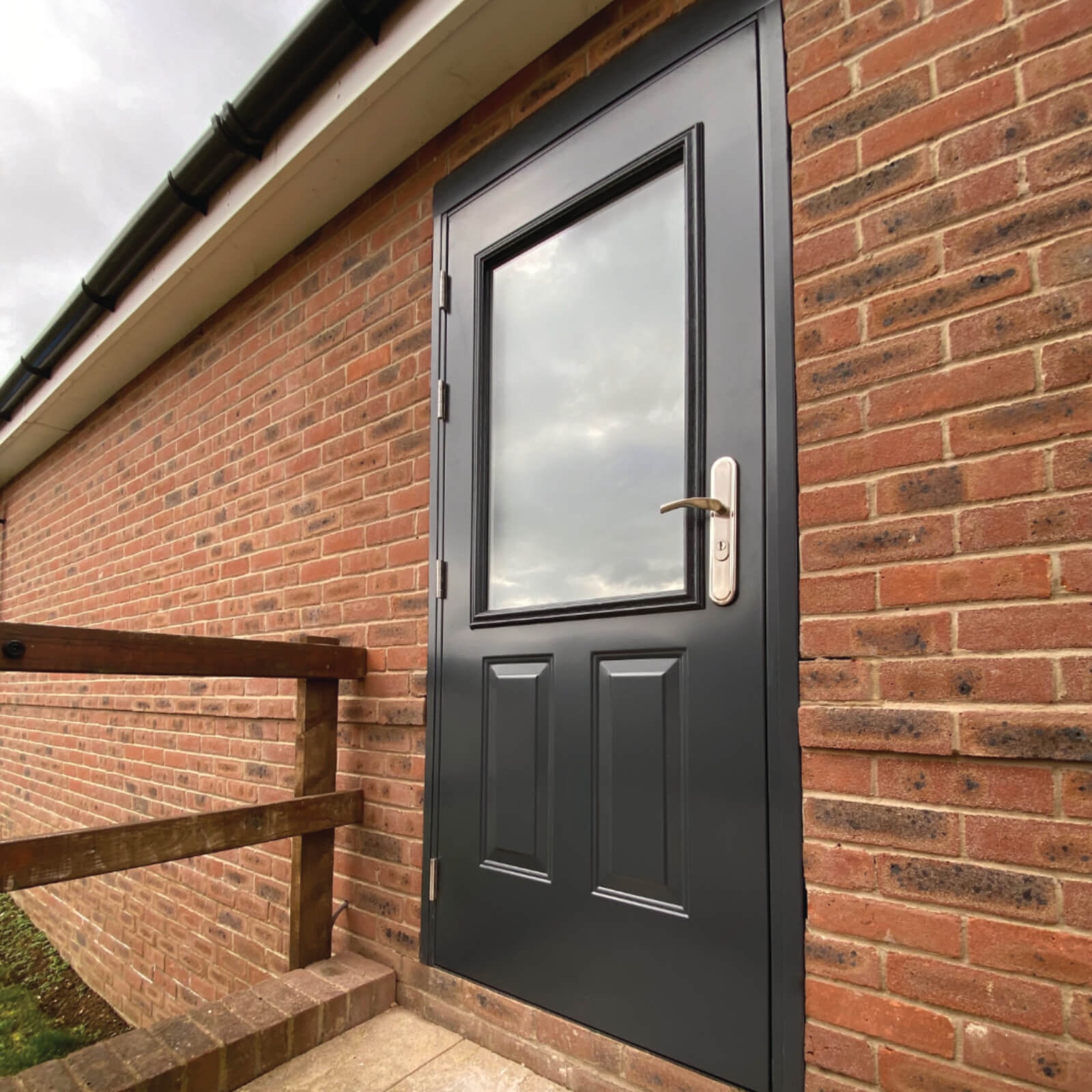My shopping cart
Your cart is currently empty.
Continue ShoppingExterior back doors are a type of security vulnerability that can pose a serious threat to any organization or individual. These back doors are created by hackers and cybercriminals to gain unauthorized access to computer networks, systems, and data. They can be introduced through various means such as malware, social engineering attacks, or insecure network connections.
In this article, we will explore the different types of exterior back doors that exist and how they can impact individuals and businesses. We will also discuss the importance of understanding these vulnerabilities and taking proactive measures to prevent them from being exploited.
By educating ourselves on the various forms of exterior back doors, we can better protect our sensitive information and ensure the security of our digital assets.

Before delving into the different types of exterior back doors, it is important to understand what exactly it is. An exterior back door is a hidden entry point or vulnerability in a computer network, system, or software that allows unauthorized access by exterior entities.
Exterior back doors can be intentionally created by hackers and cybercriminals, or they can occur accidentally through vulnerabilities in systems. These back doors are designed to bypass security measures and grant unauthorized individuals access to sensitive information.

Here are some of the most common types of exterior back doors that exist:
Malware, short for malicious software, represents one of the most prevalent types of exterior back doors. It is specifically designed to infiltrate, damage, or disrupt computer systems, granting attackers unauthorized access. Malware can take many forms, such as viruses, worms, ransomware, spyware, and adware, each with its own method of exploitation.
Hackers often use malware to create vulnerabilities in systems, enabling exterior access to sensitive data while bypassing traditional security protocols. Once installed on a device, malware can remain hidden, collecting information or spreading across networks. Due to its varying forms and adaptability, malware poses a significant and constant cyber threat.
Phishing attacks are another common form of exterior back doors that target individuals rather than systems. These attacks attempt to trick users into revealing sensitive information, such as login credentials or financial data, by posing as a legitimate source. Phishing attacks can be conducted through email, text messages, social media messages, and fake websites.
By using sophisticated techniques to manipulate victims into disclosing confidential information, hackers gain access to networks and systems without needing any technical skills. As such, phishing attacks represent one of the most significant security threats faced by organizations today.
SQL injections are a form of exterior back door that can be exploited by skilled hackers to access databases and steal sensitive information. These attacks target web applications that use SQL databases, manipulating the input fields to inject malicious code and gain unauthorized access.
Hackers can exploit vulnerabilities in web application code to bypass security measures and gain complete control over the targeted database. This type of attack is particularly dangerous as it can result in the theft of large amounts of data without leaving any trace.
Remote Access Trojans, or RATs for short, are a type of malware used by hackers to establish back doors into systems remotely. Once installed on a device, these malicious programs allow attackers to control it as if they were sitting in front door. This type of remote access allows hackers to steal data, install other forms of malware, or even carry out attacks on other systems.
RATs can be difficult to detect and remove, making them a popular tool for hackers looking to create exterior back doors into devices and networks. They are often spread through phishing emails or infected websites.
Network connections can also pose a significant threat when left unprotected. Hackers can exploit vulnerabilities in network connections, such as open ports or weak encryption protocols, to gain unauthorized access to networks and systems.
These types of exterior back doors are particularly dangerous as they can go undetected for extended periods, providing attackers with ongoing access to sensitive information.
Software and operating systems are constantly being updated to patch vulnerabilities and improve security. However, as new updates are released, hackers can exploit known vulnerabilities that have not yet been patched.
These exploits create exterior back doors into systems, allowing attackers to gain unauthorized access and steal sensitive data. To prevent these types of attacks, it is crucial to keep software and operating systems up-to-date with the latest security patches.
Weak passwords are a common cause of exterior back doors into systems. Many individuals and businesses still use simple or commonly used passwords, making it easy for hackers to gain unauthorized access. By using automated tools to guess or crack passwords, hackers can quickly exploit this vulnerability and gain access to sensitive data.
To prevent weak password attacks, it is essential to use strong and unique passwords for all accounts and implement multi-factor authentication wherever possible.
Social engineering attacks target human vulnerabilities rather than technological ones. These types of attacks rely on manipulating individuals through social interaction to reveal sensitive information or grant unauthorized access.
Common social engineering techniques include posing as a trusted source, creating a sense of urgency or fear, and building a rapport with the victim. These attacks often result in exterior back doors being created by individuals unknowingly giving out sensitive information or granting access to systems.
Due to the wide range of methods and techniques used by hackers to create exterior back doors, it is essential to regularly assess your systems for vulnerabilities. Conducting regular security audits, updating software and operating systems, and educating employees about potential threats can help prevent external back doors from being exploited.
Organizations should also implement robust security measures, such as firewalls and intrusion detection systems, to protect against common types of attacks. By staying vigilant and prioritizing cybersecurity, you can reduce the risk of exterior back doors and keep your systems and data secure.

Preventing exterior back doors requires a combination of proactive measures and ongoing security practices. Some steps you can take to prevent exterior back doors include:
Conducting regular security audits and vulnerability assessments
Keeping software and operating systems up-to-date with the latest security patches
Implementing strong passwords and multi-factor authentication
Educating employees about potential threats, such as phishing attacks and social engineering tactics
Using firewalls and intrusion detection systems to protect against exterior threats
Restricting access to sensitive data and systems based on user roles and privileges
Monitoring network traffic for any suspicious activity or attempts to access unauthorized areas
Implementing strict password policies, such as regularly changing passwords and using complex combinations of letters, numbers, and symbols
Limiting the use of remote access tools and implementing secure protocols when necessary.
By following these practices, individuals and organizations can significantly reduce their vulnerability to exterior back doors and strengthen their overall cybersecurity defenses. It is crucial to stay vigilant and regularly reassess these measures as new threats emerge.
Exterior back doors pose a significant threat to individuals and organizations because they can go undetected for extended periods. This allows hackers to access sensitive data, install malware, or carry out attacks without being detected.
Moreover, exterior back doors often bypass traditional security measures and firewalls, making them difficult to detect and prevent. Once hackers gain unauthorized access through an exterior back door, the damage can be extensive and costly.
Exterior back doors also allow attackers to create multiple entry points into systems, increasing the risk of data breaches and cyber attacks. Therefore, it is crucial to prioritize cybersecurity and take necessary precautions to prevent exterior back doors from being exploited.

The consequences of a successful exterior back door attack can be severe, resulting in financial losses, reputational damage, and compromised sensitive data. By preventing exterior back doors, individuals and organizations can reap several benefits such as:
Enhanced cybersecurity- By regularly assessing vulnerabilities and implementing security measures to prevent exterior back doors, individuals and organizations can strengthen their overall cybersecurity defenses.
Protected sensitive data- Preventing exterior back doors helps protect sensitive data from being accessed or stolen by hackers. This is crucial for organizations that handle large amounts of confidential information.
Reduced risks and costs- By effectively preventing exterior back doors, individuals and organizations can mitigate potential risks associated with cyber attacks and avoid costly damages.
Increased trust and credibility- Taking proactive measures to prevent exterior back doors can demonstrate a commitment to cybersecurity, increasing trust and credibility among customers, partners, and other stakeholders.
At My City Doors, we understand the importance of secure and high-quality doors for both residential and commercial properties. That's why we offer a wide range of door options, including swing doors, pocket doors, door panels, bypass doors, bi-fold doors, magic doors, contemporary interior doors, custom order interior doors, double interior French doors, entry doors, exterior doors, and more.
We prioritize security by offering modern European louver doors and wrought iron pivot exterior doors that are not only strong but also visually appealing. With top-of-the-line materials and expert craftsmanship, our premium residential doors are designed to last and withstand external threats, including potential back doors.
Choose My City Doors for secure and high-quality doors that will enhance the aesthetics and security of your space. Contact us today to learn more about our products, warranty information, terms of service, returns and refunds policies, privacy policy, or to schedule a visit to our showroom.
Sliding patio doors save space, offer easy access to outdoor areas, and allow natural light to flood your home. They are often made with glass panels and can enhance the view of your patio or garden.
Sliding doors are space-efficient, gliding open and closed without taking up room. French patio doors, on the other hand, are double doors that swing open, offering a more traditional and elegant look, but requiring more space to operate.
Wooden doors offer a classic aesthetic but require maintenance. Fiberglass entry doors, however, are more durable, energy-efficient, and resistant to the elements, making them a great low-maintenance option for exterior doors.
Bifold doors fold open like an accordion, allowing for a wider opening and creating a seamless transition between indoor and outdoor spaces. They’re ideal for maximizing space and letting in more natural light compared to traditional sliding patio doors.
Steel entry doors offer superior security and durability, while solid wood doors provide a more classic and customizable look. Both types are great options for exterior doors, but the choice depends on your priorities—whether it’s security, aesthetics, or maintenance.
Exterior back doors are a significant threat to individuals and organizations, as they can go undetected for extended periods and bypass traditional security measures. By prioritizing cybersecurity and implementing proactive measures such as regular audits, software updates, and employee education, it is possible to prevent exterior back doors from being exploited.
Choose My City Doors for secure and high-quality doors that will enhance the aesthetics and security of your space. With a wide range of door options and top-of-the-line materials, we are committed to providing our customers with peace of mind when it comes to their security. Visit us at one of our showrooms or contact us today for more information.